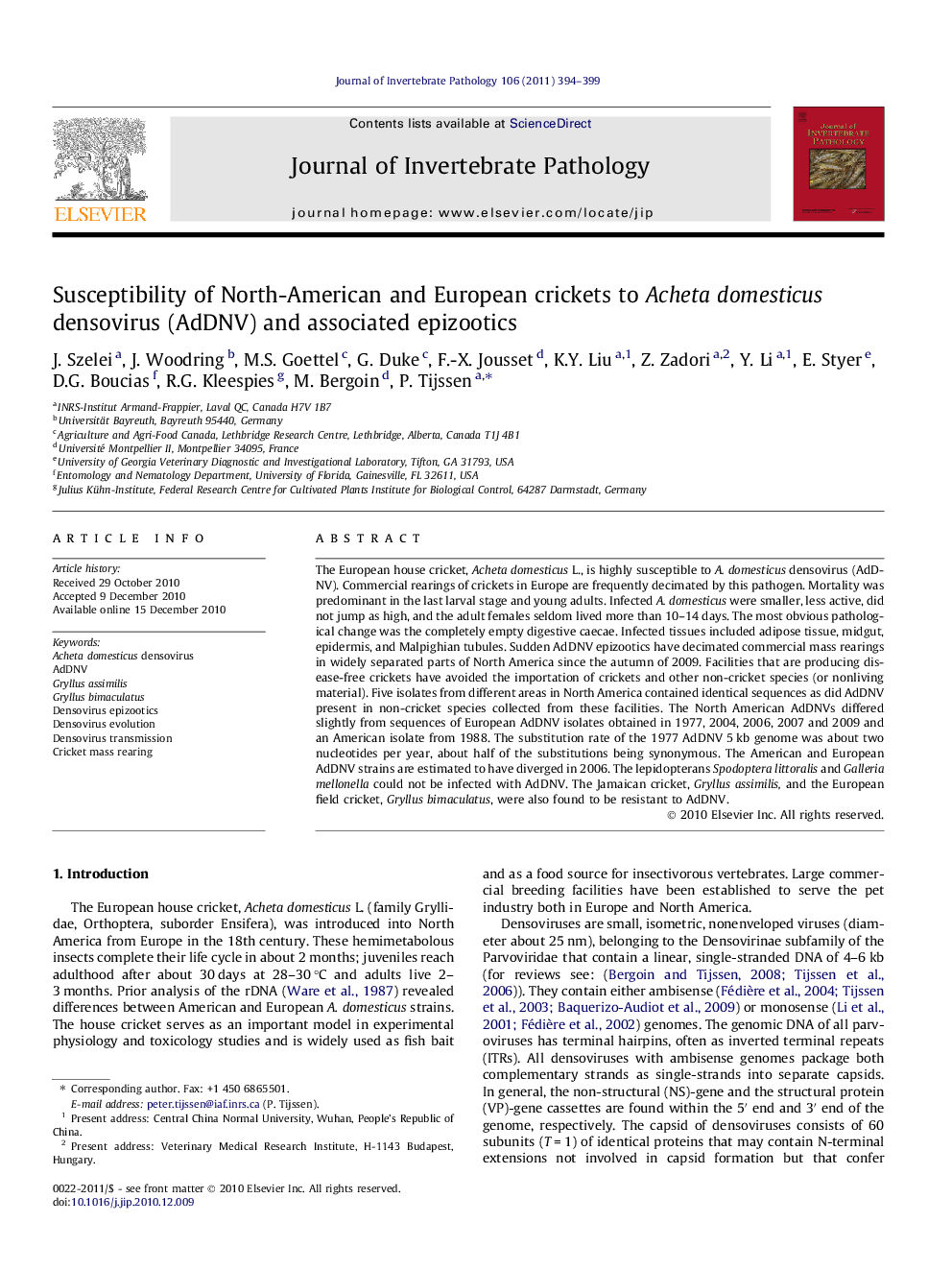| Article ID | Journal | Published Year | Pages | File Type |
|---|---|---|---|---|
| 6389871 | Journal of Invertebrate Pathology | 2011 | 6 Pages |
The European house cricket, Acheta domesticus L., is highly susceptible to A. domesticus densovirus (AdDNV). Commercial rearings of crickets in Europe are frequently decimated by this pathogen. Mortality was predominant in the last larval stage and young adults. Infected A. domesticus were smaller, less active, did not jump as high, and the adult females seldom lived more than 10-14Â days. The most obvious pathological change was the completely empty digestive caecae. Infected tissues included adipose tissue, midgut, epidermis, and Malpighian tubules. Sudden AdDNV epizootics have decimated commercial mass rearings in widely separated parts of North America since the autumn of 2009. Facilities that are producing disease-free crickets have avoided the importation of crickets and other non-cricket species (or nonliving material). Five isolates from different areas in North America contained identical sequences as did AdDNV present in non-cricket species collected from these facilities. The North American AdDNVs differed slightly from sequences of European AdDNV isolates obtained in 1977, 2004, 2006, 2007 and 2009 and an American isolate from 1988. The substitution rate of the 1977 AdDNV 5Â kb genome was about two nucleotides per year, about half of the substitutions being synonymous. The American and European AdDNV strains are estimated to have diverged in 2006. The lepidopterans Spodoptera littoralis and Galleria mellonella could not be infected with AdDNV. The Jamaican cricket, Gryllus assimilis, and the European field cricket, Gryllus bimaculatus, were also found to be resistant to AdDNV.
Graphical abstractMany households have reptiles as pets, often because allergies to other pets. The staple food of these reptiles is live crickets and large rearing facilities produce about 10 million crickets per week. Since Autumn 2009, densovirus-associated epizootics have caused large-scale mortality often leading to complete wipeouts. The pathology, diagnosis, evolution of the virus as well as the susceptibility of different cricket species has been investigated.Download full-size imageResearch highlights⺠Live crickets are an important staple food for reptile pets ⺠Recently, cricket industry has been devastated by Acheta domesticus densovirus ⺠Symptoms and pathology have been explored and diagnostic kit developed ⺠Evolution of European and American cricket densoviruses was investigated ⺠Susceptibility of other cricket species to this densovirus was determined.
